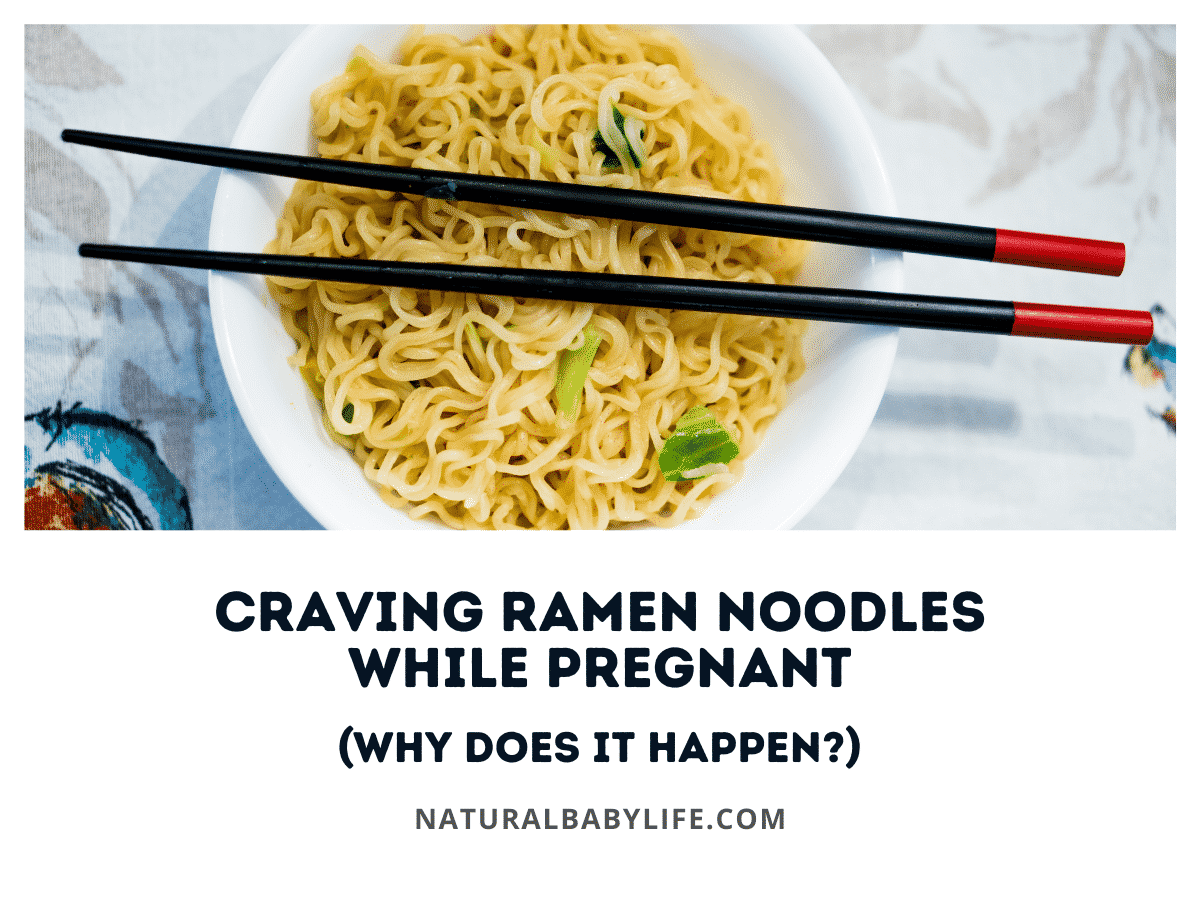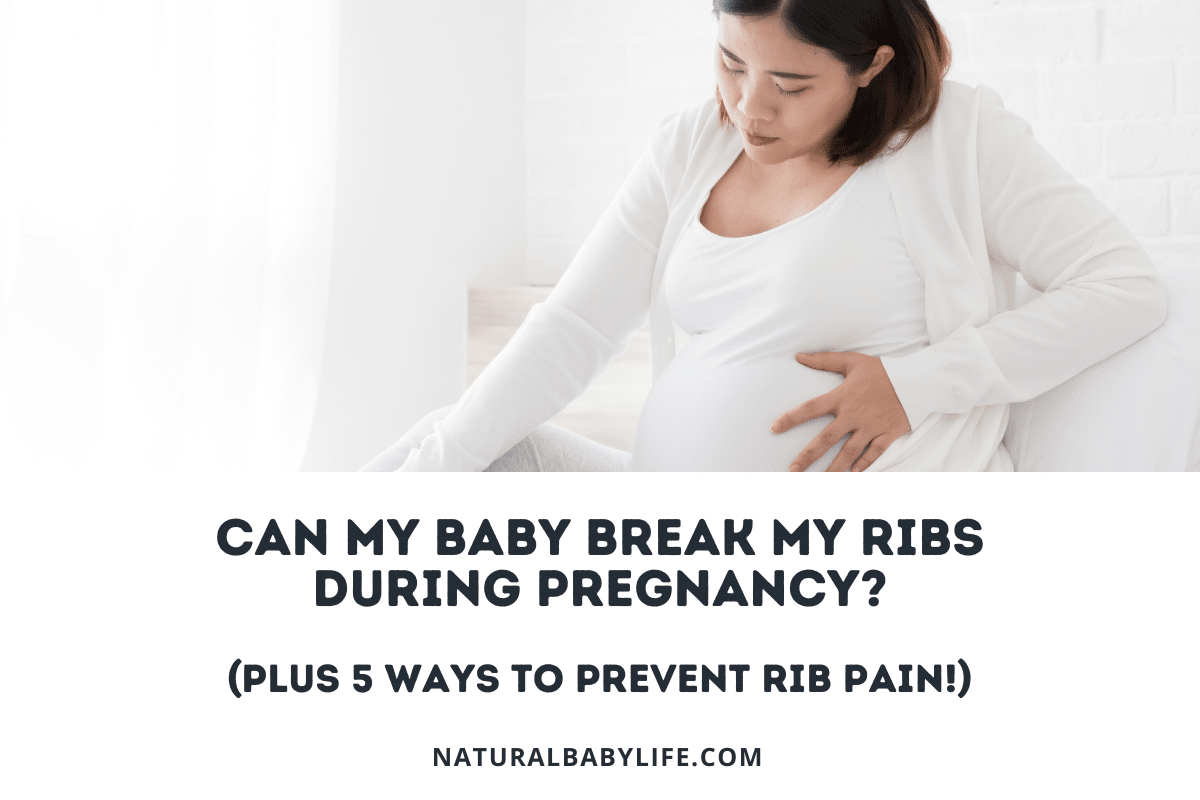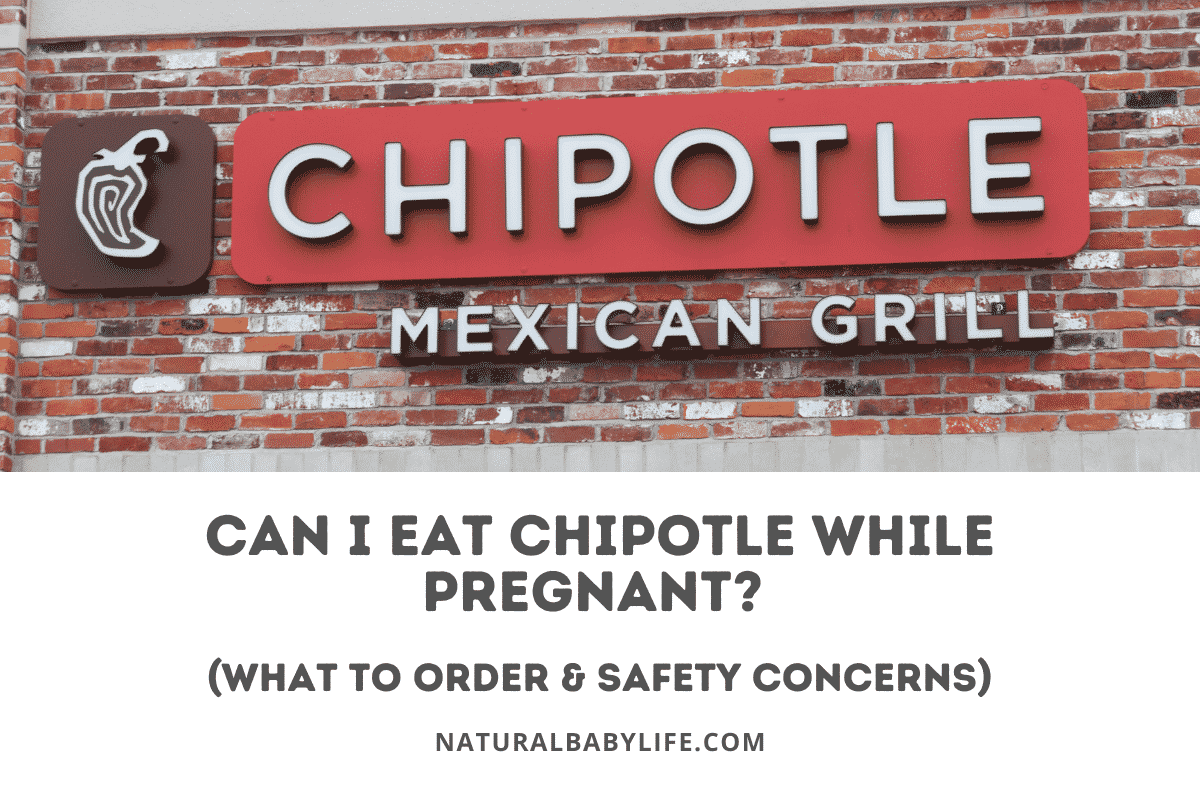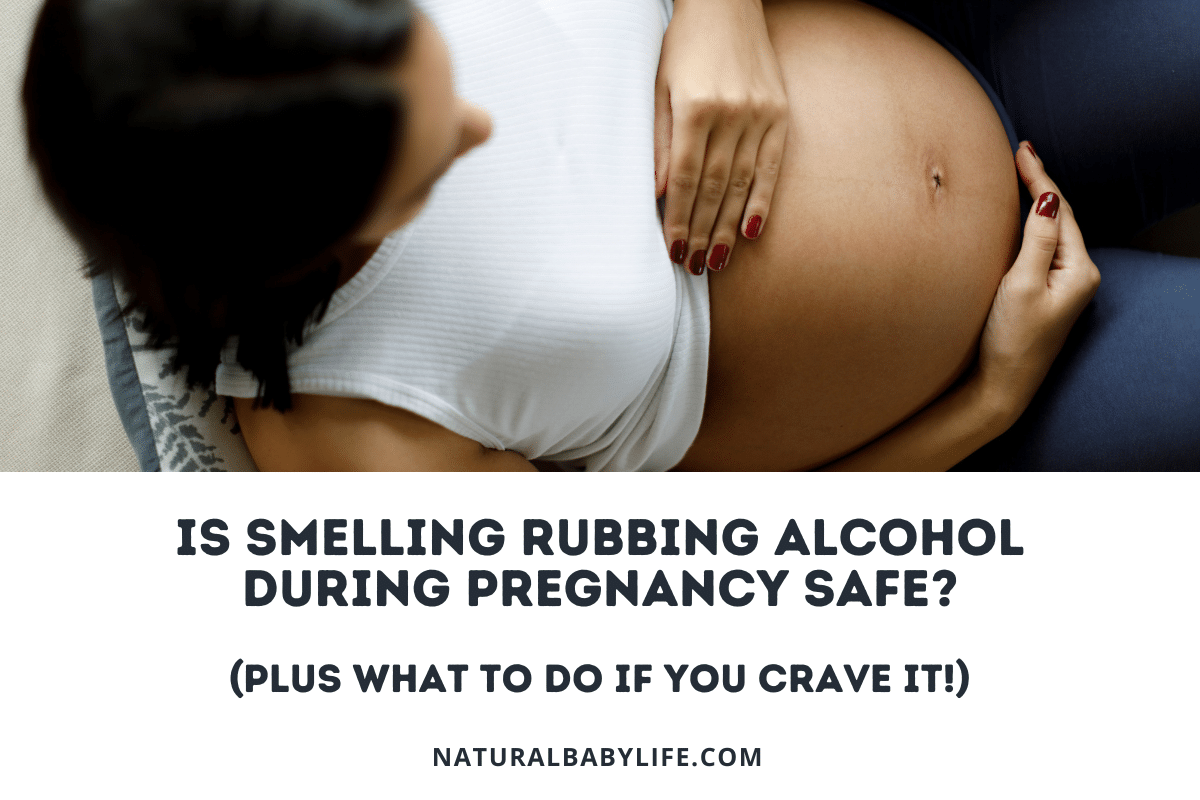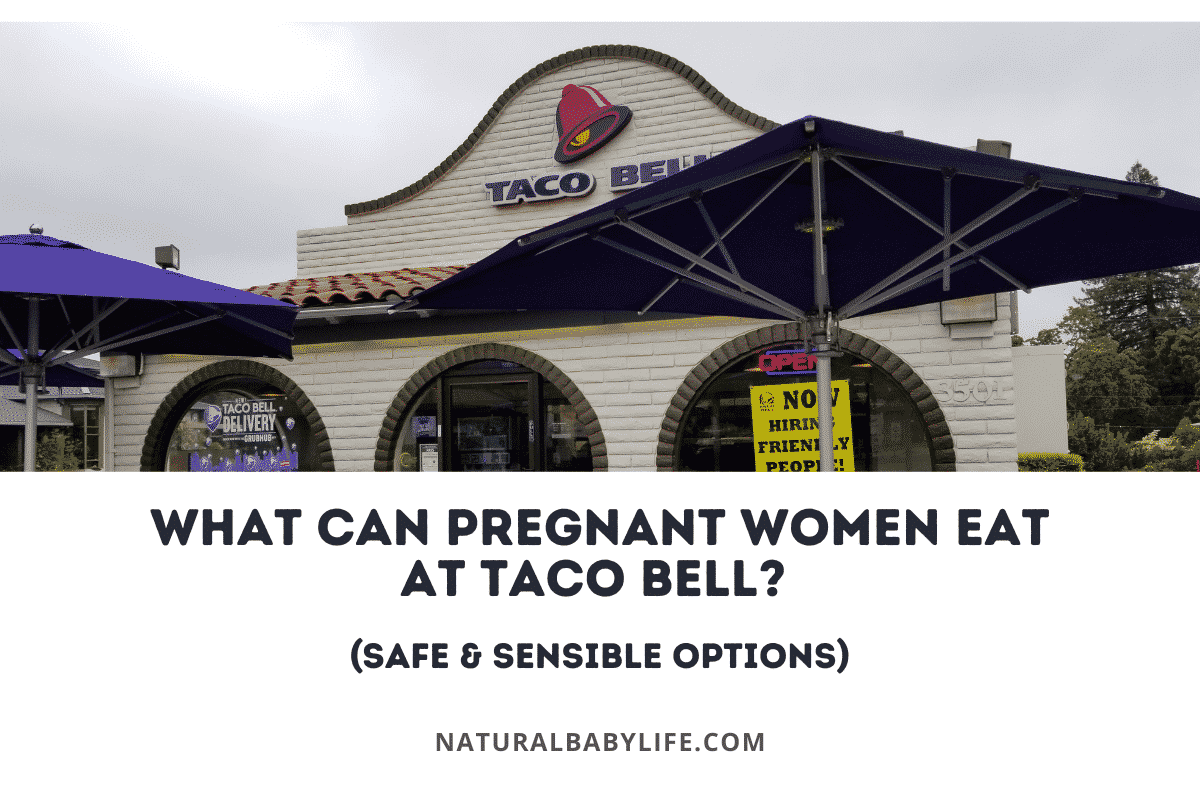Ask any college kid what some of their dietary staples are, and chances are ramen noodles will top that list. Ramen noodles are cheap, easy to prepare, and come in a variety of flavors. But why do you crave ramen noodles while pregnant? Aren’t they unhealthy?
Ramen noodles are okay to eat in moderation during pregnancy. They come in various flavors (especially when you include the seasoning) but contain little nutritional value and are high in sodium. Consider omitting the seasoning packet in favor of your own flavorings or adding a healthy protein like eggs and some veggies for nutrition.
Read on to find out which kind of ramen noodles are the healthiest option, as well as what craving ramen noodles while pregnant could mean.
Table of Contents
Is it normal to crave ramen noodles while pregnant?
It is estimated that 50-90% of US women are subjected to food cravings while pregnant.
These cravings, including those for ramen noodles, typically peak in intensity during the second trimester.
It seems that the cravings typically swing to either one side of the spectrum, with sugary sweets at one end and salty, carbohydrate-rich foods at the other.
Ramen noodles definitely fit in at the salty end of the spectrum with other carb-rich foods like potato chips.
Are ramen noodles bad for you during pregnancy?
There are few things worse than craving unhealthy foods while pregnant and feeling guilty for indulging in said cravings.
While ramen noodles are not the healthiest food choice, they certainly can be consumed while pregnant. Just like anything else, consume them in moderation and try to make sure you get plenty of nutrition from the rest of your diet.
Let’s take a look at the nutrition facts from the back of a package of chicken flavored ramen noodles along with the recommended daily value for pregnancy:
Nutritional Information for Ramen Noodles (Chicken Flavor)
| Nissin Ramen Noodle Soup (Chicken Flavor) | Without Seasoning | With Seasoning | Percent Daily Value | Recommended Daily Value During Pregnancy |
|---|---|---|---|---|
| Calories | 190 | 190 | Pregnant women should consume 300 calories per day above pre-pregnancy needs | |
| Total Fat | 7g | 7g | 11% | 25-30% daily calories should come from fat |
| Saturated Fat | 3g | 3g | 16% | < 20g/day |
| Sodium | 250g | 780g | 10% (without seasoning) 33% (with seasoning) | < 3000mg/day |
| Total Carbs | 26g | 26g | 9% | 45-64% of daily calories |
| Dietary Fiber | 1g | 1g | 3% | need 25-30g/day |
| Sugars | 0g | 0g | 0% | < 30g/day |
| Protein | 4g | 5g | 60g/day | |
| Vitamin A | 0% | 0% | 1,000 RE/day | |
| Vitamin C | 0% | 0% | 85mg/day | |
| Calcium | 0% | 0% | 1000mg/day |
While ramen noodles contain little actual nutritional value regarding vitamins and minerals, the biggest concern healthwise seems to be the sodium content. When the seasoning packet is used, you get a whopping 780 mg, or 33% of your recommended daily allowance when consuming the chicken flavor. By simply eliminating the seasoning packet or even halving it, you will be saving yourself quite a bit of sodium.
(Keep in mind the nutritional data provided above is for the chicken flavored ramen noodles. Nutritional data can vary greatly between different flavors of ramen noodles. For instance, the soy sauce flavored ramen noodles contain 880 mg of sodium without the seasoning packet and 1760 mg of sodium with the seasoning packet! 1760 mg of sodium is 77% of your daily allowance.)
Can you eat raw ramen noodles while pregnant?
Ramen noodles have been steamed and air-dried (or fried) to reduce cooking time for consumers.
Therefore, they are precooked and perfectly safe to eat “raw.” So if you are craving the crunchy taste of ramen noodles before they have been prepared according to package directions, go ahead and indulge.
Well, in moderation, of course.
The best kind of ramen noodles to eat while pregnant
Since ramen noodles contain little nutritional value, the healthiest option will be the one lowest in sodium.
If you use the flavorings when eating ramen noodles, pay attention to the sodium levels of each different flavor. For instance, the chicken flavored ramen noodles contain 780 mg of sodium per serving, while the soy sauce flavored ramen noodles contain 1760 mg of sodium per serving.
Better yet, if you live in a well-populated area, you may have restaurants nearby that offer a healthier version to satisfy your craving. Many restaurant ramen dishes contain eggs or other protein and veggies like peppers, onion, and garlic that make them a more nutrient-dense option.
What can you add to ramen noodles to make them healthier?
Since ramen noodles can be kind of lacking when it comes to nutritional content, consider adding other food items to not only enhance the taste but the nutrition as well.
Here are a few suggestions to consider adding to jumpstart your creativity and add nutrition to your ramen noodles:
- Eggs – Eggs are a great source of protein and can be quickly scrambled and added to your ramen noodles.
- Vegetables – There are a variety of vegetables that can be a tasteful addition. Try cooked mushrooms, broccoli, carrots, and/or peas. If vegetables seem to turn your stomach, add them to the food processor and add small amounts as tolerated.
- Add in chicken/steak/shrimp or other proteins – Think stirfry and add your favorite type of meat and stirfry veggies.
- Leave out the seasoning packet – Most of the sodium content of ramen noodles can be avoided by omitting the seasoning packet. However, that doesn’t mean you are limited to bland, boring noodles. Consider using coconut aminos in place of the seasoning packet. Coconut aminos taste a lot like soy sauce but have about ⅓ of sodium content.
- Add fresh herbs – Add in cilantro, scallions, or parsley to add a little zing.
Or, try a healthy homemade recipe like this “Easy Healthy Homemade Ramen Bowl” by The College Housewife:
Easy Healthy Homemade Ramen Bowl
Cook time: 15 min Total time: 35 min Yields: 2 servings
Ingredients:
- 3 Tbsp olive oil
- 1 cup shredded carrots
- 2 cups thinly sliced mushrooms
- 3 garlic cloves, minced
- 1 thumb of ginger, grated
- 2 tsp sesame oil
- 6 cups vegetables or chicken broth
- 3-4 Tbsp low sodium soy sauce
- A healthy squirt of sriracha sauce (more if you like it spicy)
- 2 packages of dried to ramen (discard flavorings)
- 3 cups kale or spinach, thinly sliced
- 1 jalapeno, thinly sliced
- 1 cup green onions, thinly sliced
- Sesame seeds
- 2-3 eggs, soft boiled ***this is what the recipe author recommends. For pregnancy safety, you should hard boil your eggs***
Instructions:
- In a large Dutch oven, heat olive oil on medium heat.
- Add in carrots and mushrooms and cook for 3-4 minutes until tender. Add in minced garlic and ginger, and sesame oil and cook for 1-2 minutes until fragrant.
- Add in broth, soy sauce, and sriracha sauce, and bring broth to a slow simmer. Taste test broth and add in more soy sauce or sriracha to your liking. Stir in kale and cook for 1-2 minutes or until wilted. Add dried ramen packages to the simmering broth and cook for 2-3 minutes.
- Top soup bowls off with thinly sliced jalapenos, sesame seeds, green onions, and eggs.
What does it mean if you crave ramen noodles while pregnant?
It’s hard to know why some pregnant women experience certain cravings while some don’t. It’s also unknown why there are so many different foods that women may crave.
It’s been said that you may be craving the nutrients your body is lacking while pregnant. Or it could result from shifting hormonal levels and changes to taste buds.
Does craving ramen noodles while pregnant mean it’s a boy or girl?
Some people believe that craving salty foods while pregnant means you are having a boy, while craving sweet things means having a girl.
If you find yourself craving ramen noodles throughout your pregnancy, it could mean that a little boy is on the way if this old wives’ tale is true!
(Which, of course, there’s no scientific basis for.)
If you want to learn more, I have a HUGE list of the most common pregnancy cravings just for you!

